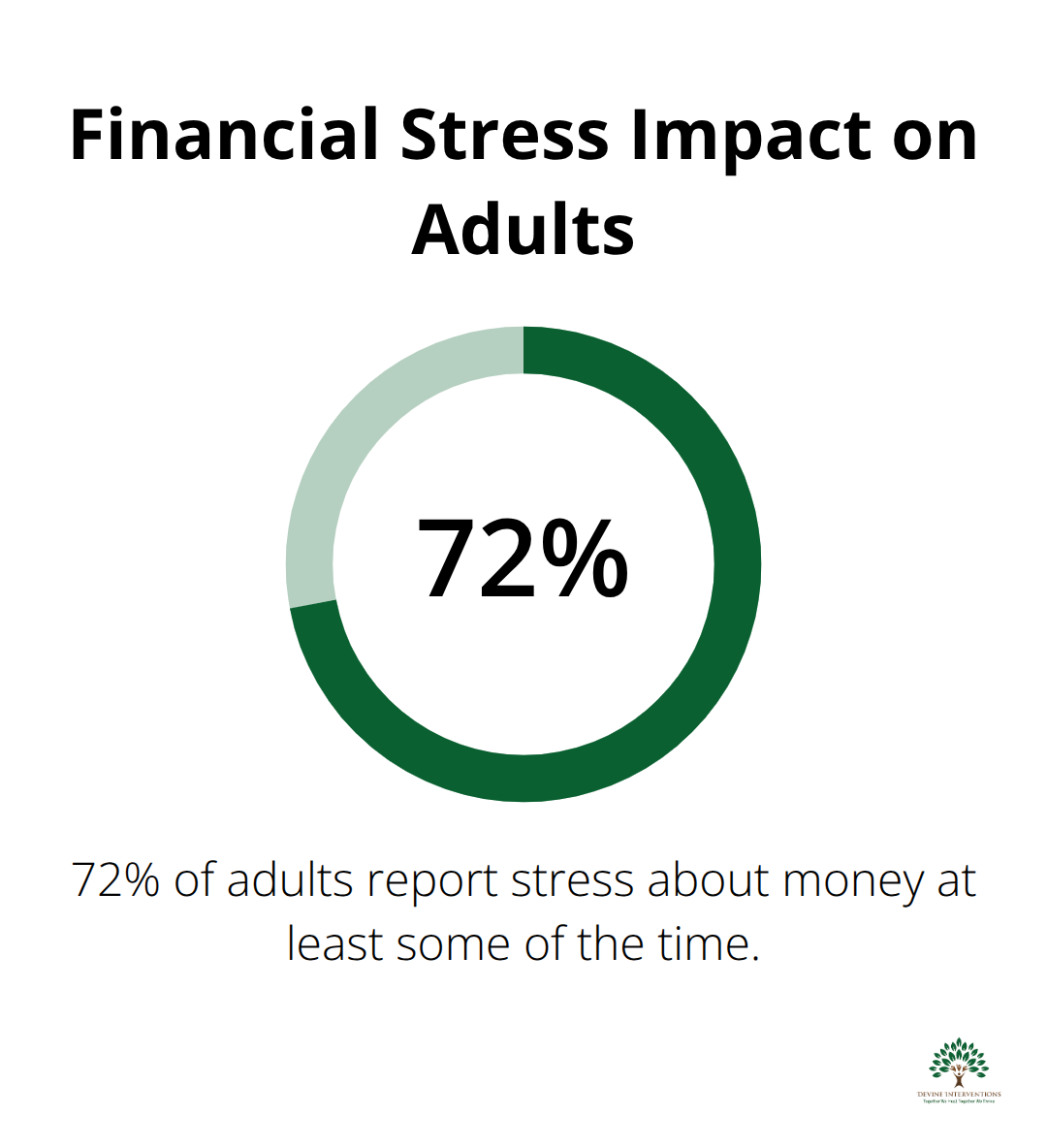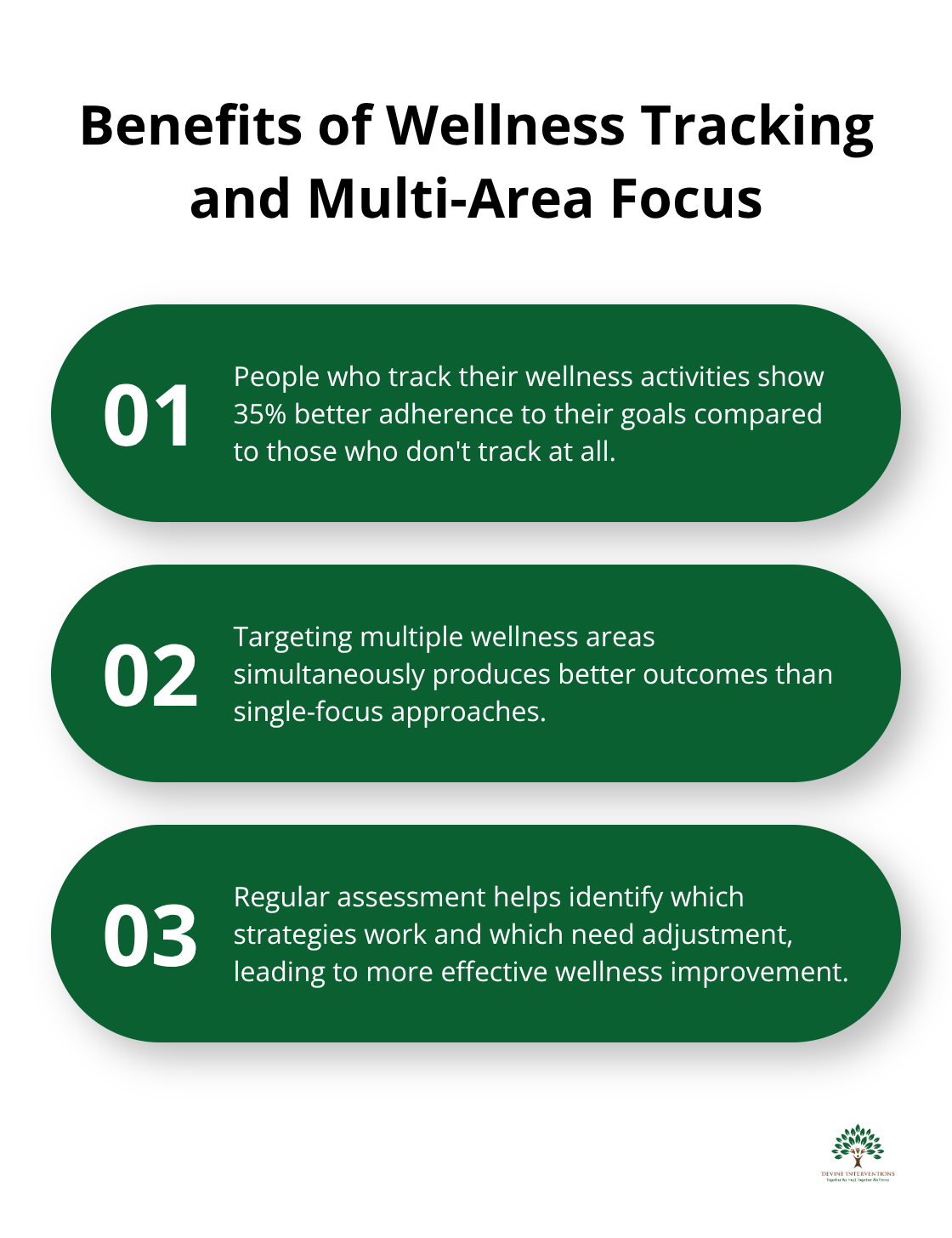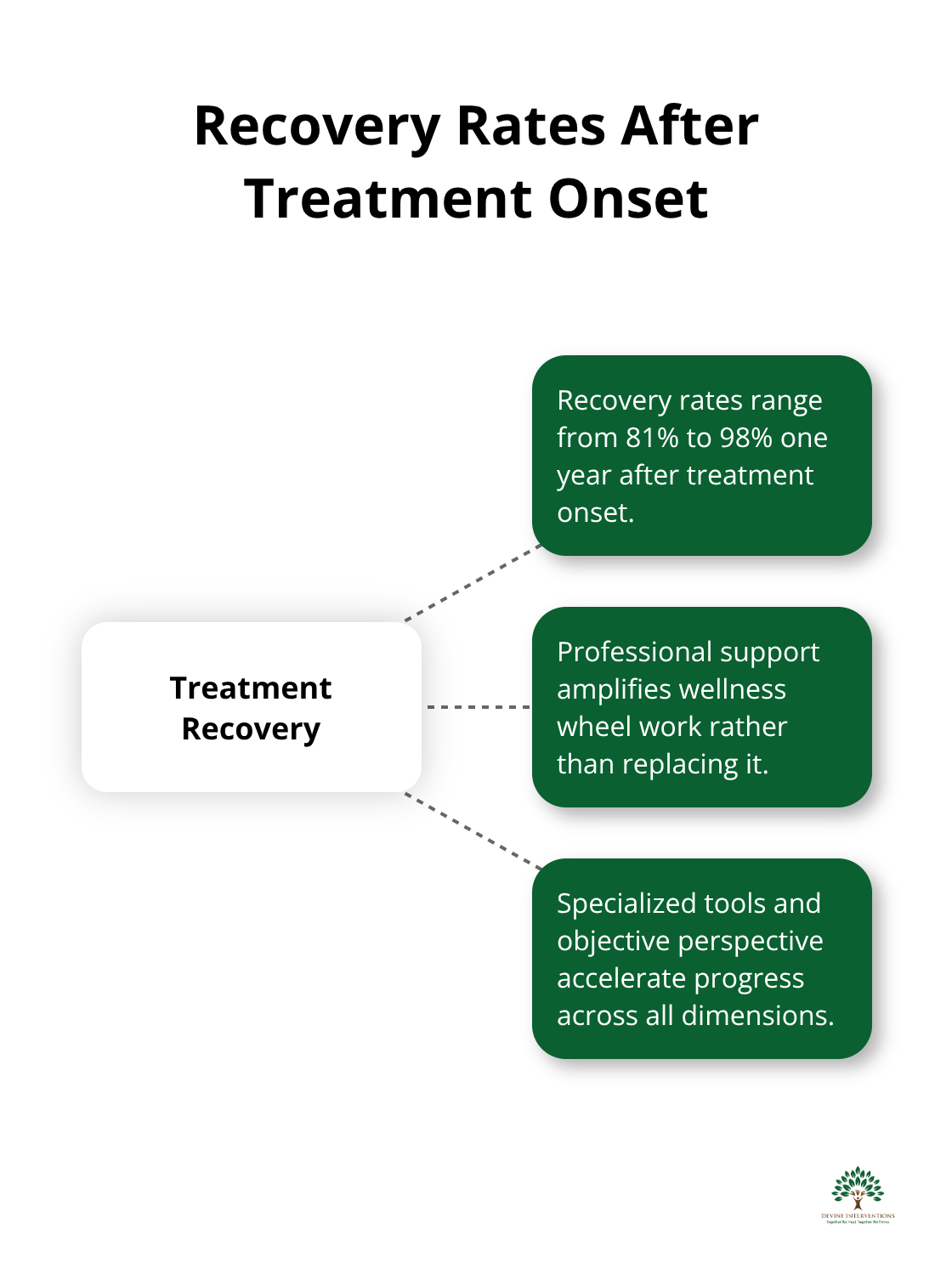Mental health struggles affect millions of people, yet many feel overwhelmed about where to start their healing journey. The wellness wheel for mental health offers a structured approach to understanding and improving your overall well-being.
At Devine Interventions, we’ve seen how this simple yet powerful tool helps people identify imbalances and create actionable plans for better mental health. This guide will show you exactly how to use it effectively.
What Makes the Wellness Wheel So Effective
The wellness wheel divides mental health into eight interconnected dimensions that work together like gears in a machine. Physical wellness forms the foundation through exercise, nutrition, and sleep patterns. Research shows that physical activity helps reduce depression severity among adults. Emotional wellness involves stress management and self-acceptance techniques that help you process difficult feelings. Social wellness focuses on meaningful relationships and community connections. Research from Harvard’s Grant Study (spanning 80 years) shows that strong relationships are the single biggest predictor of life satisfaction.
The Science Behind Interconnected Wellness
Intellectual wellness stimulates your mind through new learning opportunities and problem-solving activities. Studies from Johns Hopkins show that mentally stimulating activities reduce dementia risk by 47%. Spiritual wellness provides purpose and meaning through personal values and practices like meditation or reflection. Environmental wellness examines how your surroundings affect your mental state and daily mood. Financial wellness reduces stress through effective money management skills. The American Psychological Association found that 72% of adults report stress about money at least some of the time.

Why Balance Matters More Than Perfection
Each dimension affects the others directly. Poor sleep impacts emotional regulation abilities. Financial stress damages relationships with family and friends. Work dissatisfaction affects physical health through chronic stress responses. The National Wellness Institute’s research demonstrates that people who actively work on multiple wellness dimensions show 40% better mental health outcomes than those who focus on single areas.
How Small Changes Create Big Results
This interconnected approach means small improvements in one area create positive ripple effects throughout your entire well-being system. When you improve your sleep schedule, your emotional regulation improves too. Better emotional health strengthens your relationships, which then supports your spiritual wellness through deeper connections and meaning.
Now that you understand how the wellness wheel works, the next step involves learning how to assess where you currently stand in each dimension and create your personalized action plan.
How Do You Start Your Wellness Assessment
The most effective way to begin your wellness wheel journey involves an honest self-evaluation across all eight dimensions with a structured rating system. Rate each area from 1 to 10, where 1 represents significant struggle and 10 indicates you thrive. Physical wellness assessment includes sleep hours, exercise frequency, and daily energy levels. Many Americans struggle with meeting basic physical activity guidelines, which makes this area particularly important to evaluate honestly.
Rate Your Current Wellness Status
Social wellness requires you to examine relationship quality and your support network strength. Emotional wellness assessment involves identification of current stress levels and coping mechanisms you use daily. Financial wellness means you review your budget, savings, and money-related anxiety levels. Intellectual wellness assessment focuses on learning activities and mental stimulation you engage with regularly. Environmental wellness examines how your surroundings affect your mental state and daily mood patterns.
Create Your Action Plan With Specific Targets
After you complete your initial assessment, focus on the three lowest-scoring dimensions for maximum impact. Research from the University of Maryland shows that people who target multiple wellness areas simultaneously produce better outcomes than single-focus approaches. Set specific, measurable goals for each target area you identify. Instead of saying you’ll exercise more, commit to walk 20 minutes three times per week. Rather than improve relationships generally, schedule one meaningful conversation with a friend each week.
Track Progress With Simple Tools
Use a simple method that you’ll actually maintain long-term rather than complex systems you’ll abandon after two weeks. A basic journal or smartphone app works better than elaborate tracking systems. The American Psychological Association found that people who track their wellness activities show 35% better adherence to their goals (compared to those who don’t track at all). Check in with your wellness wheel monthly and re-rate each dimension to compare scores with previous months.

This regular assessment helps you identify which strategies work and which need adjustment. However, even the most thorough self-assessment can miss important patterns, and some wellness challenges require professional guidance to address effectively.
Why Your Wellness Plan Fails
Most people abandon their wellness wheel practice within three weeks because they make the same predictable mistakes. The biggest mistake involves people who target too many dimensions at once instead of focusing on the three lowest-scoring areas first. Research from Stanford University shows that people who attempt to change more than three behaviors simultaneously have only a 9% success rate compared to 65% for those who focus on fewer changes. Another common mistake involves people who set vague goals like “improve relationships” instead of specific actions like “schedule one coffee date with a friend each week.” The National Institute of Mental Health found that people with specific wellness goals are 42% more likely to achieve them than those with general intentions.
Common Implementation Barriers That Stop Progress
The most effective strategy for overcoming wellness barriers involves identification of your specific obstacle patterns first. Time constraints affect 78% of people according to American Time Use Survey data, but this usually masks poor priority management rather than actual time shortage. Financial barriers impact 34% of wellness attempts, yet many effective wellness activities cost nothing (like walking, journaling, or calling friends). Perfectionism sabotages 45% of wellness efforts because people quit after minor setbacks instead of viewing them as normal parts of the process.
Social Obstacles That Undermine Your Success
Social barriers include family members who undermine wellness efforts or friends who pressure you to maintain unhealthy habits. The solution involves clear boundary setting and finding accountability partners who support your wellness goals. Research shows that people with supportive social networks maintain wellness practices 60% longer than those without support systems.
When Professional Support Becomes Essential
Three specific situations require professional mental health intervention rather than self-directed wellness work alone. First, when your wellness wheel ratings consistently stay below 4 in multiple dimensions despite three months of focused effort. Second, when you experience persistent symptoms like sleep disruption lasting more than two weeks, inability to concentrate at work, or relationship conflicts that escalate despite your best efforts. Third, when you notice warning signs like increased substance use, social isolation lasting more than one month, or thoughts of self-harm. Recovery rates 1 year after treatment onset range from 81% to 98%, with professional support amplifying your wellness wheel work rather than replacing it, giving you specialized tools and objective perspective that accelerate your progress across all dimensions.

Final Thoughts
Regular wellness wheel for mental health practice transforms how you approach your well-being by providing clear structure and measurable progress. People who consistently use this framework report 40% better mental health outcomes within six months compared to those who use single-focus approaches. The interconnected nature of the eight dimensions means improvements in one area create positive effects throughout your entire system.
Mental health resilience requires you to view wellness as an ongoing process rather than a destination. Monthly check-ins with your wellness wheel help you adapt to life changes and maintain balance during challenging periods. Research shows that people who practice regular wellness assessments maintain their mental health gains 60% longer than those who don’t track their progress.
The most important step involves starting where you are today rather than waiting for perfect conditions. Whether you scored low in three dimensions or struggle with implementation barriers, professional support can accelerate your progress significantly (and provide specialized tools you can’t access alone). At Devine Interventions, we integrate wellness wheel principles into our comprehensive treatment approach, combining evidence-based therapy with practical life skills. Take action today by scheduling your initial consultation with Devine Interventions to begin your personalized wellness journey.







